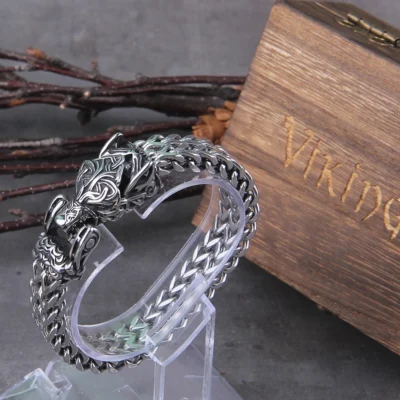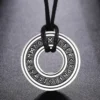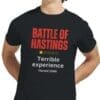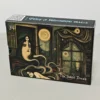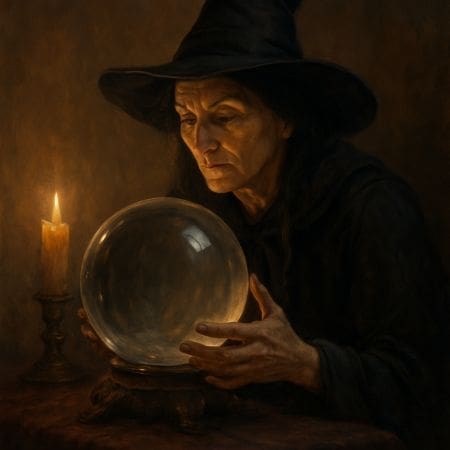
Mystical Spheres Through the Ages
A crystal ball glinting in candlelight evokes a singular image: that of a mysterious figure peering into its depths, whispering secrets of the future. But how did such a simple object come to embody the very idea of divination? And what made it so strongly connected to witches?
The crystal ball — known in folklore as a tool of prophecy, in witch trials as an item of evidence, and in modern times as a symbol of mysticism — has a deep and layered history. From the ancient Celts to Victorian séances, its use and reputation have evolved through magic, science, fear, and fascination.
At a Glance: The History and Meaning of Crystal Balls
- Crystal balls were first used by Druids and Roman seers, who practised divination through polished stones or reflective surfaces — a method known as scrying.
- In the Middle Ages, crystal balls were employed by mystics, astrologers, and advisors to royalty.
- During the witch hunts of early modern Europe, crystal balls were condemned as demonic tools, strengthening their association with witches.
- The Victorian occult revival romanticised the image of the witch and her crystal ball, making it a symbol of mystical femininity and spiritual insight.
- Today, crystal balls are still used in witchcraft, spiritual practice, and popular culture as emblems of intuition, vision, and the unknown.
Ancient Origins: The Power of Reflection
The idea of seeking visions through reflective surfaces is ancient. The practice, known as scrying, appears across cultures and time periods:
- Celtic Druids in Britain used polished beryl or quartz stones for divination as early as 2000 BCE.
- In ancient Rome, scrying was common among fortune-tellers, using still water or reflective metal to interpret visions.
- The word crystal comes from the Greek krystallos, meaning ice — early stones were believed to be permanently frozen water with divine properties.
These methods weren’t considered evil but rather spiritual — a way to access hidden truths or divine messages through nature.
The Middle Ages: Science, Magic, and Prophecy
As Christianity spread through medieval Europe, attitudes toward magic grew more suspicious. Yet, during the early Middle Ages, crystal balls remained respected tools of learning and mysticism.
Notable Practitioners
- John Dee, Queen Elizabeth I’s advisor, famously used a crystal ball and an obsidian “shew-stone” to speak with angels.
- Astrologers, alchemists, and learned scholars viewed crystal balls as part of natural philosophy, blending science and magic.
During this period, crystal balls were often regarded as instruments of higher knowledge — until the line between divine insight and diabolic influence began to blur.
Witchcraft Accusations: From Divine Tool to Devil’s Eye
With the rise of witch hunts between the 15th and 17th centuries, crystal balls took on a far darker reputation.
- Any form of fortune-telling, crystal gazing, or spiritual communication was branded as witchcraft.
- Objects like crystal balls became proof of a pact with the Devil, especially in cases against women practicing folk magic.
- Books like the Malleus Maleficarum (1487) helped spread the belief that such tools were gateways to demonic knowledge.
As fear replaced curiosity, crystal balls moved from royal courts and scholarly studies into shadowy superstition — now associated not with insight, but with witchcraft and danger.
Folklore and Fable: Witches and Their Stones
British and Welsh folklore speaks of witches — often wise women or local healers — using small polished stones to divine the future.
- In Welsh traditions, a gwrach (meaning crone or witch) might own a seeing stone believed to show deaths, disasters, or spirits.
- In rural England, cunning folk were said to use crystal spheres or black mirrors to locate lost objects or uncover hidden truths.
- These stories blend real folk practices with whispered warnings — part fear, part reverence.
Whether truth or tale, the idea of a witch with her crystal ball entered collective memory, where it remains even today.
The Victorian Occult Revival
By the 19th century, fear gave way to fascination. The Victorian era’s spiritualist movement brought crystal balls back into polite society.
- Séances, parlour readings, and mesmerism became fashionable — and crystal balls were central props.
- Fortune-tellers, often styled as exotic mystics or “Gypsy” women, used them to entrance and entertain.
- Authors and artists depicted witches as seductive or sorrowful figures, with glowing orbs that hinted at untold power.
This period transformed the crystal ball from an item of suspicion into a glamorous symbol of the unknown — a change that still influences modern depictions of witches and seers.
Symbolism of the Crystal Ball
The crystal ball carries layers of meaning, depending on context and era:
- Clarity and truth – as a clear surface reflecting hidden knowledge
- The unconscious mind – mirroring one’s inner world
- Protection – believed to shield against dark energies or spirits
- Divine communication – a conduit between this world and others
To a medieval observer, it might have symbolised dangerous knowledge. To a Victorian, it was a portal to the afterlife. To a modern witch, it represents self-empowerment and spiritual alignment.
Forbidden and Feared: Legal Bans and Trials
Throughout history, crystal balls have been banned, destroyed, or used as evidence in witch trials:
- In early modern England, Parliament passed laws forbidding “conjuration, witchcraft, and sorcery.”
- Those caught with magical objects could face trial — often with the crystal ball named among “tools of the devil.”
- Confiscated items were sometimes burned, along with grimoires, herbs, and symbols.
Rather than extinguish belief, these actions only heightened the ball’s allure and symbolism. It became an icon of forbidden power.
Crystal Balls in Witchcraft Today
In contemporary witchcraft, Wicca, and pagan traditions, the crystal ball is alive and well.
- Used in scrying rituals, often during full moons or Sabbats
- Displayed on altars for intention-setting, meditation, or energy cleansing
- Chosen based on crystal properties: clear quartz for clarity, obsidian for grounding, amethyst for intuition
Far from outdated, it’s now embraced as a modern tool with ancient roots — connecting today’s practitioners to a long lineage of mystics, witches, and seekers.
Common Questions About Crystal Balls and Witches
What is a crystal ball used for?
A crystal ball is used for scrying, or gazing into the reflective surface to receive visions, messages, or impressions.
Did medieval witches really use crystal balls?
Some cunning folk and healers may have used polished stones, but the classic image of a witch with a crystal ball became more widespread in post-medieval folklore and Victorian fantasy.
What is scrying?
Scrying is a method of divination using reflective surfaces, allowing the practitioner to enter a light trance and interpret visions.
Why are crystal balls associated with witches?
Because of their use in divination and their condemnation by religious authorities, crystal balls became linked with witchcraft during the witch trials of the 15th–17th centuries.
Are crystal balls dangerous?
No — in modern use, they are spiritual tools for reflection and inner work. Like any magical object, intention is what defines its impact.
Echoes of the Past
The crystal ball remains one of the most iconic magical objects in history — a sphere of secrets that has travelled from Druidic groves and medieval courts to séance circles and fantasy films.
Its mystery lies not just in what it shows, but in what it represents: the timeless human desire to see beyond what is known, to touch the hidden world, and to glimpse the future.
Whether in the hands of a cunning woman, a court magician, or a modern witch, the crystal ball continues to gleam with meaning.
Explore our Medieval Halloween guide

Medieval Magic
From enchanted pendants to legendary relics, this collection channels the magic, myth, and symbolism of the Middle Ages.
Whether you seek protection, wisdom, or just a touch of otherworldly style — you’ll find your talisman here.

